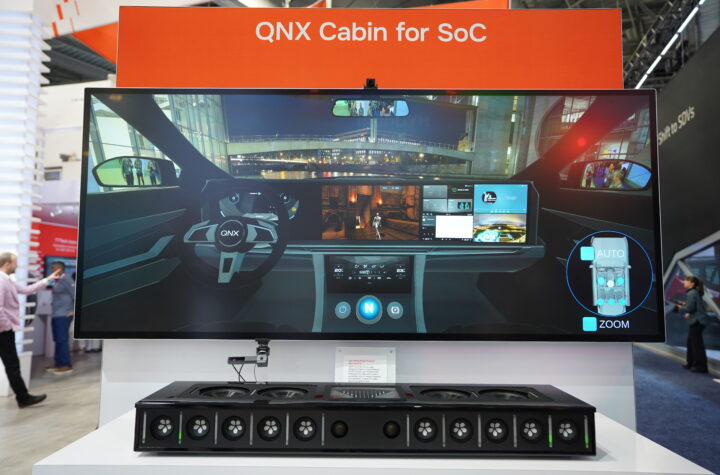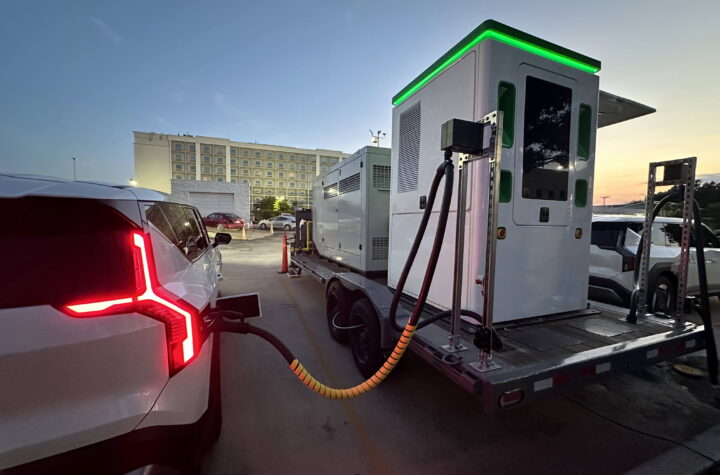
Whether you’re tearing down the styling or tearing down the car, BMW’s 5 Series still sets the standard.
 |
| With its swooping nose and blunt tail, the 5 Series styling is a little less than BMW conservative. |
BMW consistently sells some 40,000 5s a year in the U.S. for a 15-20 percent share of the luxo-sport sedan market, slightly fewer than Mercedes’ segment-leading E-Class but more than everyone else’s entries, which include the Audi A6, Cadillac CTS, Infiniti Q45, Jaguar SClass, Lexus GS400 and LS430, Saab 9-3 and Volvo S60/S80. Its typical buyer, BMW says, is a 47 year old “driving enthusiast with practical needs” and a $150K annual income. Seventy percent are male, 37 percent have families and 35 percent boast post-graduate degrees.
Now, hard on the heels of its predecessor’s highly successful 7-year run, comes an all-new 5 Series for 2004 with increased interior and trunk room, improved dynamics and performance and a long list of technology features and refinements. It also arrives wearing BMW’s controversial new styling and a somewhat simplified version of the love-it-or-hate-it IDrive electronics control system introduced on its big-brother 745i sedan for 2002.
 |
| The interior still features cleanly-executed luxury and a simple version of BMW’s I-drive system. |
We’ve grown to like the front, with its prominent BMW-icon kidney grilles flanked by swept-back quad headlamps, but we’re less enthralled with the somewhat bulbous body and tallish tail. Roughly two inches longer, wider and taller than the ’03 on a 2.3-in. longer 113.7-in. wheelbase, it does provide slightly more front head and shoulder room, substantially more rear head, shoulder and leg room and 26 percent more trunk capacity. It also boasts a fairly impressive 0.29 drag coefficient vs. the previous models’ range of 0.29 to 0.31.
Bottom of the ’04 line is the $39,995 525i, powered by a 184-hp 2.5L DOHC 24-valve VVT aluminum I-6, while the step-up 530i offers a 225-hp 3.0L version of the same silkysmooth six and additional standard stuff for an additional $5K. Both sixes are little changed except for intake and exhaust system tuning to enhance response at low to medium speeds. Highly motivated by the same sophisticated 325-hp 4.4L V-8 that powers the 745i, the $54,995 545i replaces the previous 540i atop the ’04 line. Easily the industry’s most technically advanced V-8, this smooth and muscular engine boasts BMW’s Valvetronic variable valve lift system and fully-variable intake manifold in addition to “Double VANOS” variable valve timing.
Valvetronic, among other things, fully controls engine breathing by varying both lift and timing of the intake valves, which eliminates the conventional throttle while improving power, response and efficiency. The downsides, of course, are cost and complexity, plus additional engine height that contributes to the new-design 7 and 5 Series’ high hoods and beltlines. (See AI May, ’03 “Its All About Flow” for technical details.)
All three available transmissions are all-new 6-speeds. The 6-speed manuals essentially add an 0.85:1 ultra-overdrive above the previous unit’s five ratios. The 6-speed automatics incorporate BMW’s “STEPTRONIC” manual shifting for drivers who like to control their own ratio selections for sportier driving on occasion. The 6- Speed Sequential Manual Gearbox (SMG) — available at a later date with the optional Sport Package — is a clutchless electro-hydraulically shifted manual gearbox that will shift either automatically or on driver demand through the console lever or paddles on the steering wheel.
Extensive use of aluminum throughout the chassis and the entire front section of the body (both structure and skin) results in a new 5 Series somewhat lighter than its predecessors despite its slightly larger size and heavier feature load. The suspension (a unique double-pivot design in front, sophisticated multi-link in back) is virtually all aluminum. The transmission crossmember, engine mounting brackets, power steering pump housing, driveshaft and rear suspension subframe are all aluminum. An anti-oxidation titanium/zircon coating on aluminum components, plus a combination of rivets and high-tech adhesives, prevent corrosion wherever aluminum and steel are fastened together. BMW’s latest (version 8.0) Dynamic Stability Control (DSC) is standard across the board.
Briefly pushing its console-mounted switch activates Dynamic Traction Control (DTC), which de-activates “engine intervention,” leaving only the individual wheel brakes to control wheelspin below 43 mph in specific low-traction conditions.
A longer push of the same button de-activates all DSC functions except anti-lock braking. Wheels, tires and brakes are up-sized and upgraded throughout. Wheels range from standard 16 x 7 in. on the 525i to 18 x 8 front and 18 x 9 rear on the Sport Package 545i. Corresponding tires range from 225/55R-16 V-rated all-season to 245/40R-18 and 275/35R-18 W-rated run-flat performance. A Flat Tire Monitor (FTM) — which uses the DSC sensors to monitor and compare rotational wheel speeds — is standard on all models, while run-flat tires (which maintain their shape and stability for a considerable distance following a loss of pressure) are a feature of all sport packages.
BMW’s adaptive brakelights, which debuted on the new 7 Series and have spread to the Z4, X5 and 3 Series coupes and convertibles, increase their illuminated area under hard braking to warn following drivers of emergency stops. Adaptive Xenon headlamps (optional on 525i and 530i, standard on 545i) help drivers see around corners by steering along with the front wheels, swiveled by small servo-motors guided by an electronic control system. The headlamps also auto-level to compensate for load and transitory braking and acceleration. The “evolved” iDrive is a simplified version of the all-powerful, oft-enfuriating electronic systems control that debuted to mixed reviews in the ’02 7 Series. The noble idea is to control climate, entertainment, communication and (optional) navigation systems through a single large knob on the center console. BMW’s overly complex and sometimes counterintuitive execution has had 7-Series owners reading themselves to sleep with their manuals. The 5 Series simplifies it somewhat and adds a single hard button to recall the main menu. (Audi does it far better with several well-marked hard buttons to access specific functions.)
Both standard and optional premium sound systems are enhanced and integrated with the standard (OnStar-like) BMW Assist and optional navigation, phone and Sirius Satellite Radio systems, all receiving signals through a single shark-fin roof antenna. Safety features include two-stage front air bags, front and rear Head- Protection Systems and (with optional 20-way front seats) active head restraints, all coordinated by an Intelligent Safety and Information System (ISIS), which uses 10 sensors to tailor system responses to accident circumstances.
One very interesting world first technology is Active Steering, a feature of the optional Sport Package available on all models, which electromechanically varies the steering ratio based on vehicle speed and dynamic conditions to enhance response and stability. The ratio varies from a very quick 10:1 for parking, U-turns and sharp low-speed corners to a leisurely 20:1 for highway cruising. (We tried it through a tight slalom and other maneuvers, and it works exceptionally well. See AI Sept. ’03 “Bosch-ZF Active Steering“ for technical details.) Active Roll Stabilization, also part of the Sport Package, replaces the conventional front and rear anti-roll bars with active bars twisted by hydraulic actuators for “amazingly flat” cornering.
The long list of stand-alone and packaged options includes Active Cruise Control, front and rear Park Distance Control, a Head-up Display (which requires the Navigation System), rear and rear-side window sunshades, rear side-impact air bags, a split folding rear seat with a ski bag and a variety of interior trim and seating choices.














More Stories
Horse Logos In Cars – Car Brands With Equine History
Durable Engine Labels for Harsh Automotive Conditions
How Does Motorcycle Transport Work? Costs, Methods & Companies